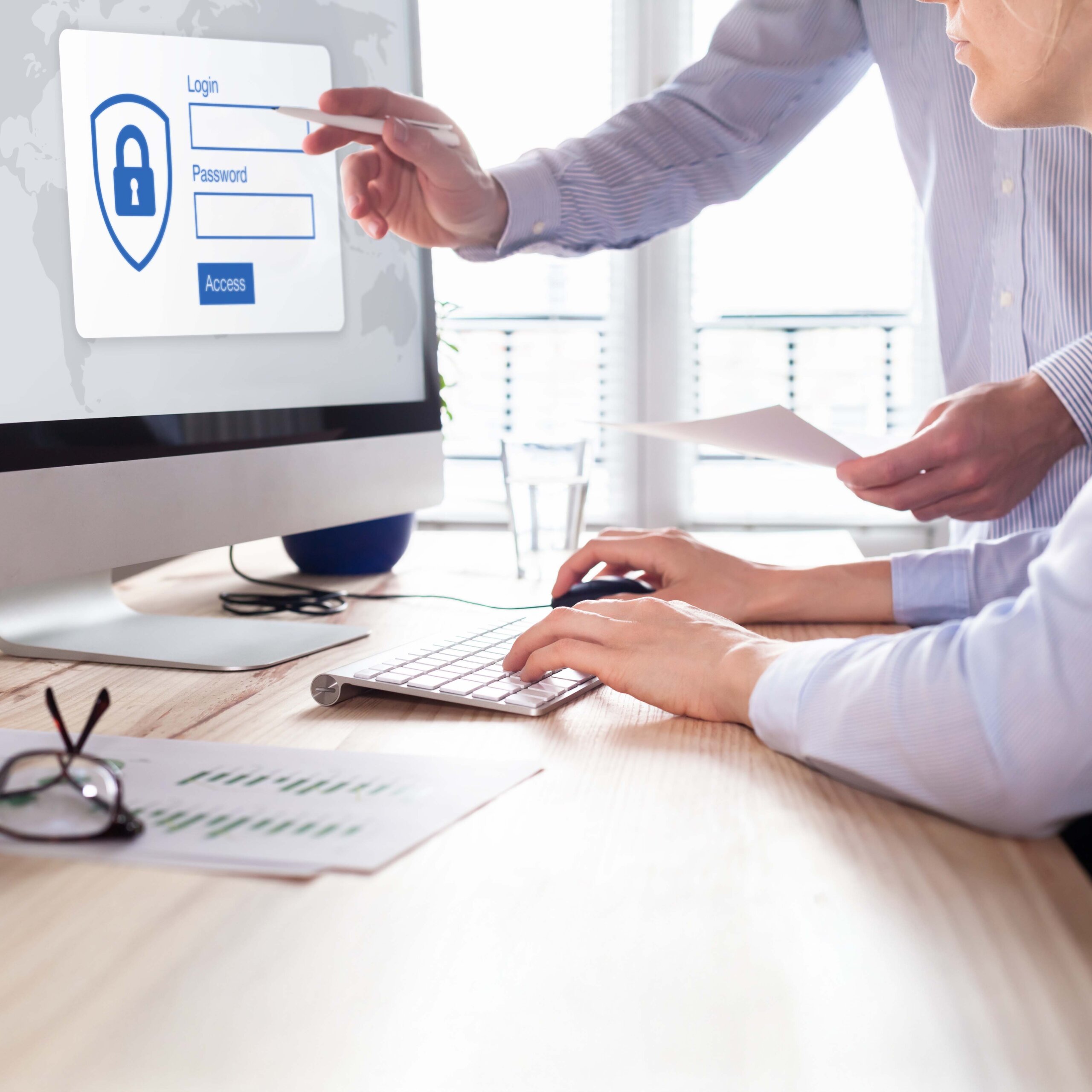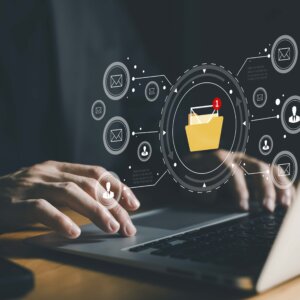
Cybersecurity Awareness Month 2025: Strengthening Digital Defenses in an AI-Powered World
Why Cybersecurity Awareness Matters More Than Ever
Every October, Cybersecurity Awareness Month serves as a timely reminder that cyber threats don’t just target governments and large enterprises, they affect individuals, small businesses, and critical infrastructure alike. In 2025, the stakes are higher than ever.
Attackers are leveraging new technology and tactics to scale their operations, such as artificial intelligence, supply chain exploitation, and deepfake manipulation, all of which create new challenges in verifying trust. At the same time, businesses and individuals are storing and sharing more sensitive information across devices and cloud platforms, leaving more vulnerabilities for cyber criminals to exploit.
The message is clear: protecting digital assets requires more than one-off fixes. It demands a proactive, layered approach that blends technology, strategy, and awareness.
The Threat Landscape Today
The threat landscape in 2025 looks markedly different from even a year or two ago. While phishing and ransomware remain persistent, attackers are no longer relying solely on these traditional tactics. Instead, familiar schemes are being amplified by advanced technologies, giving cybercriminals new ways to scale attacks with greater speed and accuracy. What’s more, cybercrime has evolved into a global enterprise, with organized groups operating like corporations and coordinating across borders. These dynamics are reshaping how risks emerge and where organizations need to focus their defenses.
Key Cybersecurity Challenges in 2025
1. AI-Powered Attacks at Scale
Cybercriminals now use AI to create highly targeted phishing campaigns, write malicious code, and even probe defenses for weaknesses. What once took weeks of manual effort can now be automated in minutes, making attacks faster, more convincing, and harder to detect.
Some AI systems even “learn” from failed attempts, refining their tactics until they succeed. For businesses, this means traditional defenses like spam filters or signature-based antivirus tools are increasingly ineffective unless paired with smarter, behavior-based detection.
The threat landscape in 2025 looks markedly different from even a year or two ago. While phishing and ransomware remain persistent, attackers are no longer relying solely on these traditional tactics. Instead, familiar schemes are being amplified by advanced technologies, giving cybercriminals new ways to scale attacks with greater speed and accuracy. What’s more, cybercrime has evolved into a global enterprise, with organized groups operating like corporations and coordinating across borders. These dynamics are reshaping how risks emerge and where organizations need to focus their defenses.
2. Supply Chain Exploitation
Organizations increasingly rely on third-party vendors and cloud services, many of which have direct access to sensitive data or internal systems. A single weak link in the supply chain can provide attackers with access to entire networks, as seen in several high-profile breaches.
The challenge is that many organizations focus their defenses on their own systems but fail to vet or continuously monitor vendors. This blind spot leaves even the most security-conscious businesses vulnerable to compromises outside of their direct control.
3. Deepfake Manipulation
Deepfake videos and voice cloning have evolved beyond novelty. Criminals are using them to impersonate executives, trick employees into approving wire transfers, or mislead the public with false information. Unlike a suspicious email with typos, deepfakes are realistic and difficult to identify without specialized tools.
These attacks exploit trust in human communication, making social engineering more dangerous than ever. As these technologies improve, organizations will need to train staff and implement verification protocols to confirm requests that involve sensitive data or financial transactions.
4. Expanding Attack Surfaces
Remote work, mobile devices, and IoT-enabled tools have dramatically increased the number of potential entry points for attackers. Every smartphone, tablet, smart printer, or connected camera represents a doorway into corporate systems.
The challenge is compounded by the fact that many of these devices were not designed with security in mind, making them easier targets for exploitation. When attackers breach one poorly secured device, they can often move laterally through networks, accessing more valuable systems and data. This creates a constant need for monitoring, patching, and segmenting devices to contain risks.
5. Data Privacy and Personal Information Exposure
One of the fastest-growing risks is the sheer amount of data individuals share online. From social media posts to e-commerce accounts and mobile apps, every interaction generates personal information that can be collected, sold, or stolen.
Cybercriminals use this data to craft convincing phishing scams, steal identities, or even break into business systems through employee accounts. The rise of data broker sites has made it easier than ever for attackers to piece together profiles of their targets.
For individuals, this means being cautious about what is shared online, regularly reviewing privacy settings, and monitoring accounts for unusual activity is no longer optional—it’s essential.
Five Cybersecurity Strategies for 2025
Recognizing the threats is only the first step. The real value comes from applying strategies that can reduce risks for both individuals and organizations. The following practices balance new technology with practical steps you can take to strengthen your digital defenses.
1. Embrace Adaptive Multi-Factor Authentication
Static MFA is no longer enough. Adaptive MFA uses context—such as device, location, and behavior—to determine if a login attempt is suspicious. For example, logging in from an unusual country may trigger additional verification.
By adjusting the level of security in real time, adaptive MFA helps block unauthorized access without adding unnecessary friction for legitimate users. For individuals, this can mean choosing apps and services that support adaptive authentication. For organizations, it requires deploying tools that integrate seamlessly across all systems.
2. Monitor for Deepfake and AI-Generated Threats
As deepfakes grow more convincing, organizations and individuals alike must learn to spot warning signs. Investing in detection tools is one piece of the puzzle. Just as important are human processes, like requiring employees to verify unusual requests through a second channel (phone call, in-person confirmation) before transferring funds or releasing data.
A good rule of thumb: if a request feels urgent, out of character, or too sensitive to handle casually, treat it as suspicious until proven otherwise.
3. Implement Continuous Threat Hunting
Waiting for alerts is too risky in today’s environment. Continuous threat hunting means actively searching networks and systems for signs of compromise, even when no alarm has gone off.
For businesses, this often involves cybersecurity teams using advanced analytics and automation to identify subtle anomalies. For individuals, it can mean monitoring credit reports, enabling alerts for unusual account activity, and regularly reviewing app permissions.
4. Secure the Supply Chain
Every vendor relationship is also a potential attack path. Organizations should require vendors to meet baseline security standards, provide proof of compliance, and notify partners immediately if they experience a breach. Some companies are now embedding cybersecurity requirements directly into contracts to enforce accountability.
On the personal side, the same principle applies when choosing apps, services, or online retailers. Opt for providers with a track record of strong security practices, clear privacy policies, and transparency in how they handle your data.
5. Leverage AI Defensively
While cybercriminals use AI to scale their attacks, defenders can use it to detect them. AI-driven analytics can monitor large volumes of data in real time, flag unusual behavior, and help teams respond faster.
For businesses, AI tools can uncover insider threats, identify vulnerable systems, and predict potential attack paths. For individuals, AI-powered tools are already built into many credit monitoring apps, antivirus software, and identity theft protection services. These tools make advanced protections accessible to anyone who wants an extra layer of defense.
How Kaseware Supports Smarter Cybersecurity
At Kaseware, we see firsthand how organizations struggle with fragmented data, siloed investigations, and limited visibility across teams. Our investigative platform is designed to close these gaps and give security teams the tools they need to respond faster and smarter.
Some of the ways Kaseware strengthens cybersecurity efforts include:
- Link Analysis: Uncover hidden relationships between people, organizations, and digital evidence, helping investigators connect the dots in fraud or cybercrime cases.
- AI-Driven Services: Automatically transcribe audio, extract entities from documents, and detect anomalies in data. This saves analysts time while improving accuracy.
- Public Portals: Enable employees, customers, or citizens to securely submit suspicious activity reports or cyber incident tips, creating a valuable intelligence pipeline.
- Secure Cross-Agency Collaboration: Break down silos and share information with trusted partners while maintaining strict access controls.
By integrating investigative tools, secure collaboration, and compliance features, Kaseware helps organizations manage threats more effectively, whether they originate inside the network or across global supply chains.
A Shared Responsibility
Cybersecurity Awareness Month 2025 is a reminder that digital security is not just an IT function. It is a shared responsibility. Whether you are an individual protecting personal data, a small business safeguarding customer records, or a government agency securing critical infrastructure, proactive measures today can prevent devastating consequences tomorrow.
At Kaseware, we are committed to supporting organizations in their fight against cyber threats with investigative tools built for modern challenges.
Ready to see how Kaseware can strengthen your cybersecurity posture? Schedule a demo today








